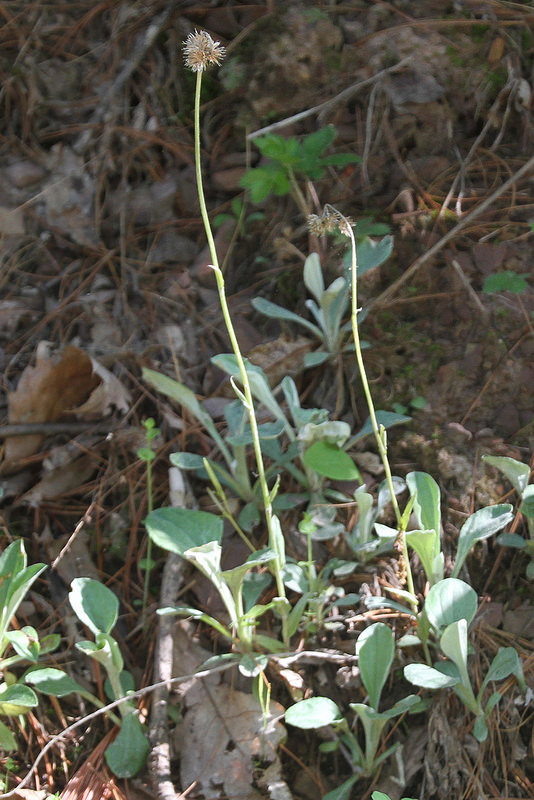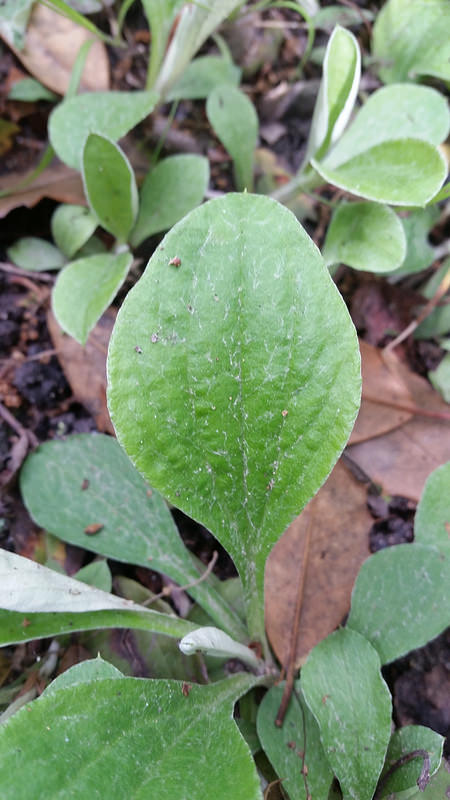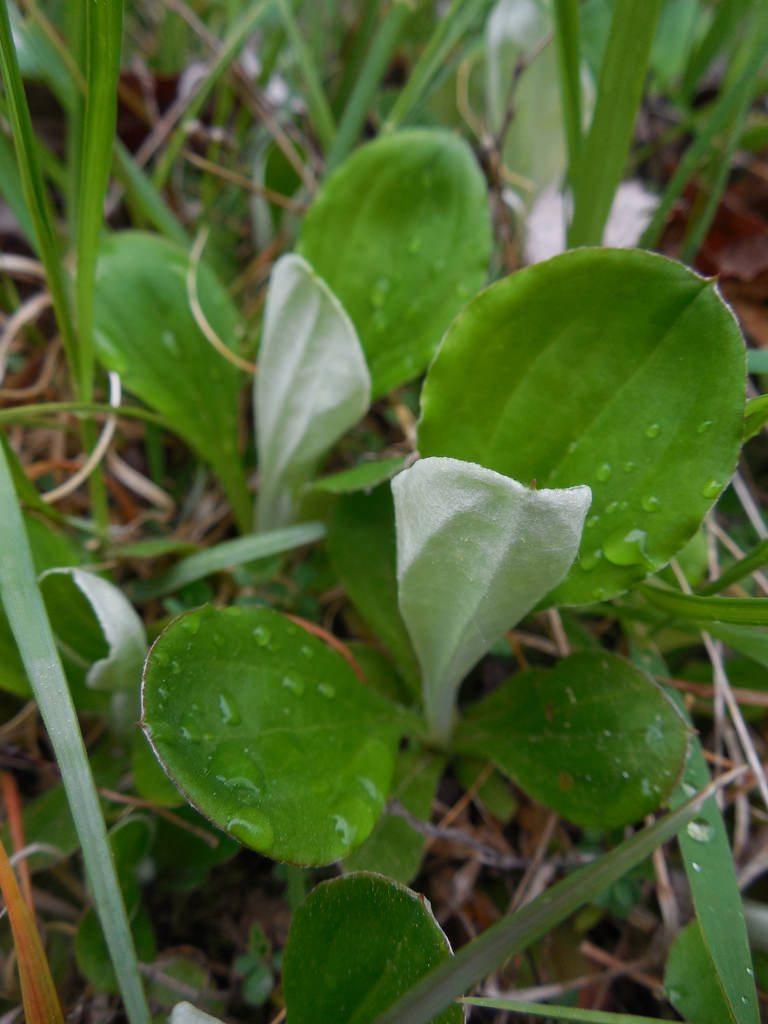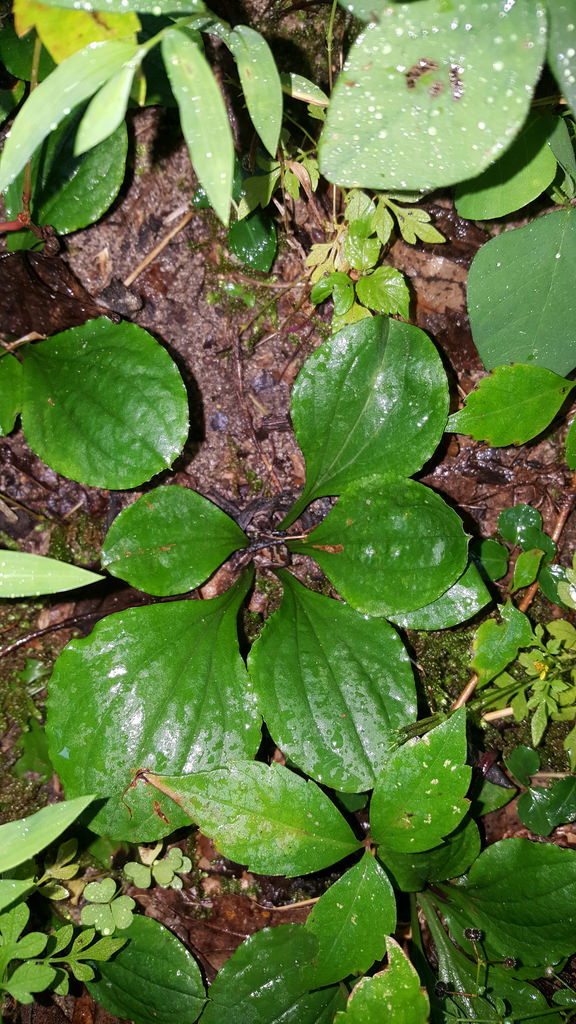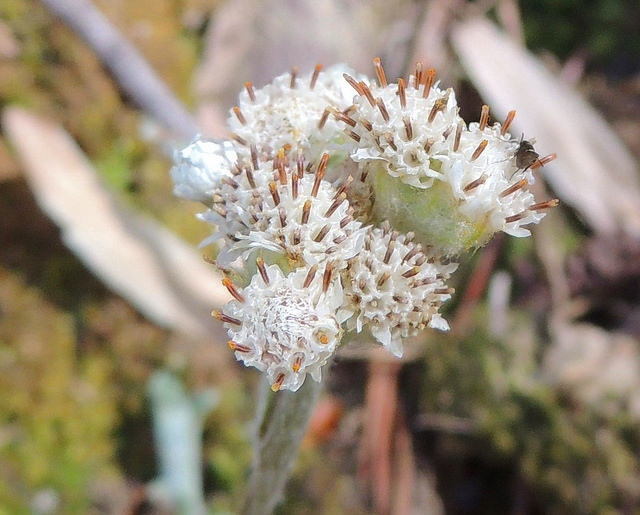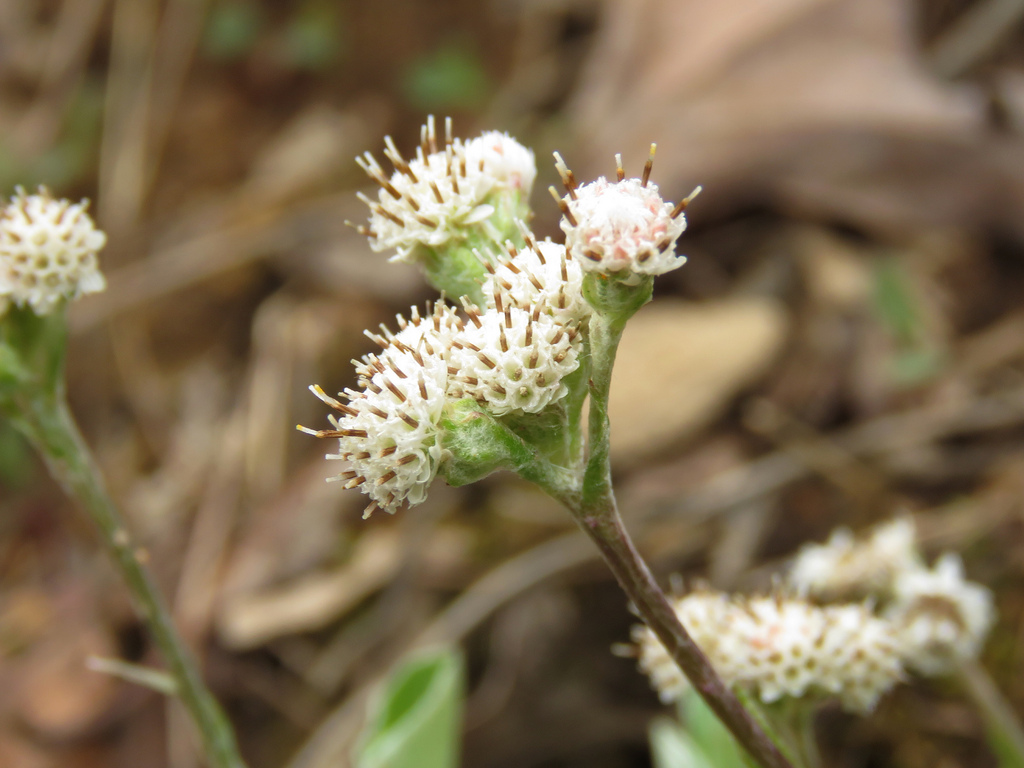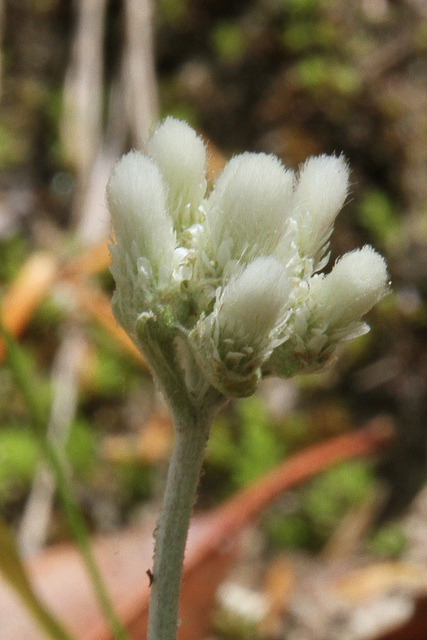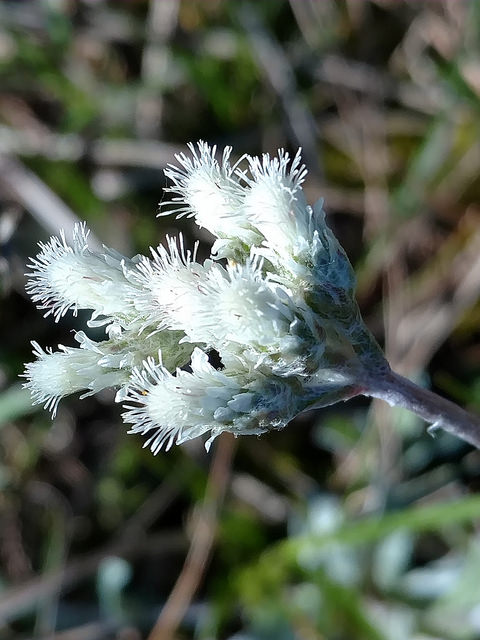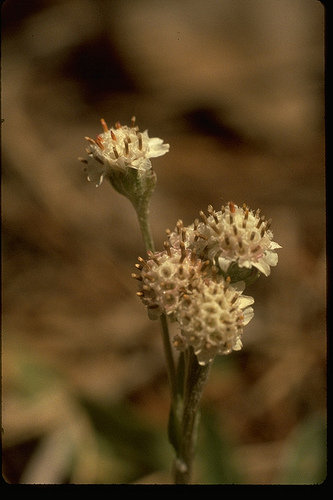Map Snapshot























234 Records
Seasonality Snapshot
Source: Wikipedia
| Antennaria plantaginifolia | |
|---|---|

| |
| Female (pistillate) flower | |
| Scientific classification | |
| Kingdom: | Plantae |
| Clade: | Tracheophytes |
| Clade: | Angiosperms |
| Clade: | Eudicots |
| Clade: | Asterids |
| Order: | Asterales |
| Family: | Asteraceae |
| Genus: | Antennaria |
| Species: | A. plantaginifolia
|
| Binomial name | |
| Antennaria plantaginifolia (L.) Richardson
| |
| Synonyms[1] | |
|
Antennaria caroliniana Rydb. ex Small | |
Antennaria plantaginifolia (known by the common names plantain leaf pussytoes and woman's tobacco)[2] is a perennial forb native to the eastern North America,[3] that produces cream colored composite flowers in spring.
Description
[edit]
Antennaria plantaginifolia is rarely more than 15 centimeters (5.9 in) tall, consisting of a basal rosette, and an erect stem which bears the inflorescence, a tight flat topped cluster of 4 to 17 fuzzy flower heads composed exclusively of disc flowers, with no ray flowers. The basal leaves are petiolate, oval to roundish, 3.5 to 7.5 centimeters (1.4 to 3.0 in) long and 1.5 to 3.5 centimeters (0.6 to 1.4 in) wide, with 3 to 7 prominent veins. The under side of the leaves is covered in thick silvery hair. Additional leaves along the stem are lanceolate and smaller. The fruit are cypselae with a pappus of white bristles.

Antennaria plantaginifolia is dioecious, meaning that the male and female flowers are borne on separate plants. It often forms colonies, sometimes consisting entirely of male or female plants. It does so in part through vegetative reproduction. Stolons emerging from the basal rosette take root and develop into new plants.[4][5][6][7][8]
Distribution and habitat
[edit]Antennaria plantaginifolia is widely distributed in the eastern North America from Quebec and Nova Scotia west to Minnesota and south to Mississippi, Arkansas, and Florida, with isolated populations in eastern Texas and Saskatchewan.[9][3] In Virginia, it grows in habitats including dry forests, barrens, and meadows.[10] The presence of this species is dependent on appropriate habitat, and it may be eliminated from an area by development, changes in land use, or competition with invasive species.
In North America, the plant was nominally called "Indian tobacco", as it was often chewed by children in place of real tobacco.[11]
Galls
[edit]This species is host to the following insect induced gall:
- Asynapta antennariae Wheeler, 1889 (see image)

References
[edit]- ^ "Antennaria plantaginifolia". The Global Compositae Checklist (GCC). Retrieved January 25, 2014 – via The Plant List. Note that this website has been superseded by World Flora Online
- ^ Wildflowers of the United States, Plantain-leaf Pussytoes, Woman's Tobacco - Antennaria plantaginifolia
- ^ a b USDA, NRCS (n.d.). "Antennaria plantaginifolia". The PLANTS Database (plants.usda.gov). Greensboro, North Carolina: National Plant Data Team. Retrieved February 5, 2014.
- ^ "Antennaria plantaginifolia (plantain-leaved pussytoes)". Go Botany. New England Wildflower Society. Retrieved February 5, 2014.
- ^ Britton, Nathaniel Lord & Brown, Addison (1913). An Illustrated Flora of the Northern United States, Canada and the British Possessions: From Newfoundland to the Parallel of the Southern Boundary of Virginia, and from the Atlantic Ocean Westward to the 102d Meridian, Volume 3., p. 451. Charles Scribner's Sons, New York.
- ^ "Plantain-leaved Pussytoes (Antennaria plantaginifolia)". Retrieved February 5, 2014. © 2005 Connecticut Botanical Society. (http://www.ct-botanical-society.org)
- ^ Bayer, Randall J. (2006). "Antennaria plantaginifolia". In Flora of North America Editorial Committee (ed.). Flora of North America North of Mexico (FNA). Vol. 19. New York and Oxford: Oxford University Press. Retrieved February 5, 2014 – via eFloras.org, Missouri Botanical Garden, St. Louis, MO & Harvard University Herbaria, Cambridge, MA.
- ^ Hilty, John (2020). "Plantain-Leaved Pussytoes (Antennaria plantaginifolia)". Illinois Wildflowers. Retrieved February 5, 2014.
- ^ "Antennaria plantaginifolia". County-level distribution map from the North American Plant Atlas (NAPA). Biota of North America Program (BONAP). 2014.
- ^ "Digital Atlas of the Virginia Flora | Antennaria plantaginifolia (L.) Richards". Retrieved January 25, 2014. Virginia Botanical Associates. (2014). Digital Atlas of the Virginia Flora (http://www.vaplantatlas.org). c/o Virginia Botanical Associates, Blacksburg.
- ^ Bergen, Fanny D. (1892). "Popular American Plant-Names". The Journal of American Folklore. 5 (17). American Folklore Society: 89–106. doi:10.2307/533542. JSTOR 533542.

